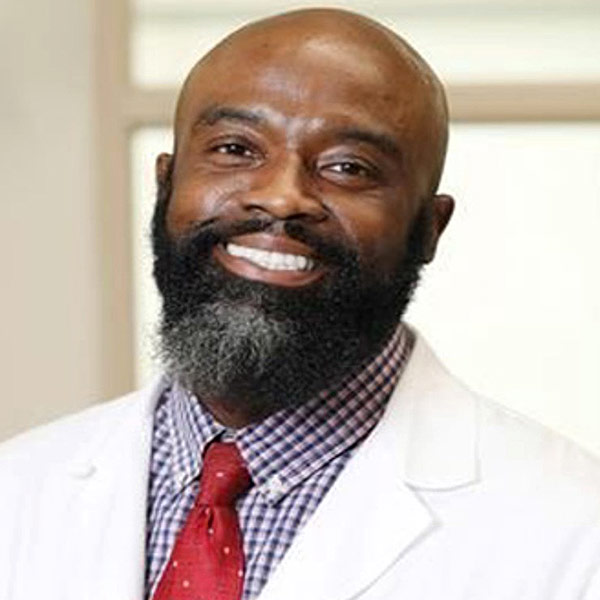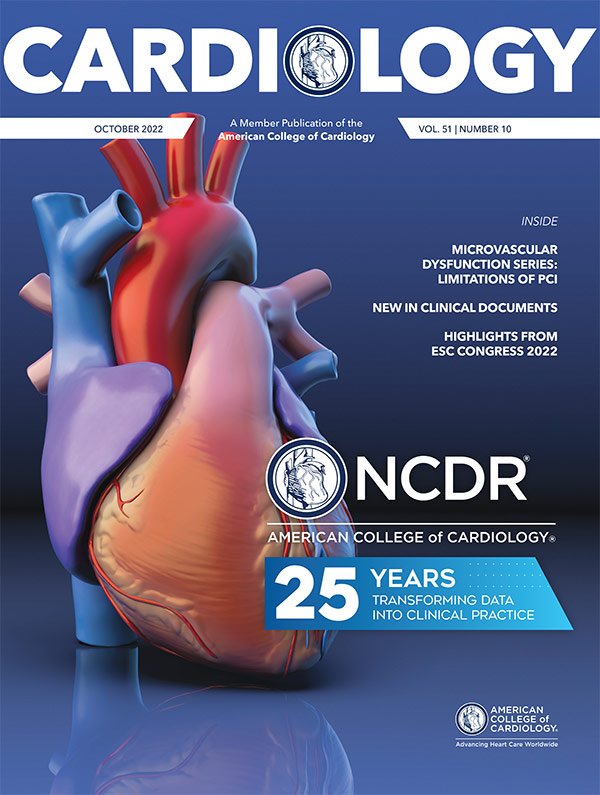For the FITs | Perspective: How Can Cardiology Be an Ally For LGBTQIA+ Communities?

There has been greater acceptance and understanding of the diversity of sex, gender and gender expression and their place in various cultures across time.1,2 The latest Gallup data from 2021 found that 7.1% of the U.S. population identify as lesbian, gay, bisexual, transgender (LGBTQIA+), or something other than heterosexual.3 Of concern, LGBTQIA+ communities remain some of the most underserved populations when it comes to cardiovascular health.4
Reflections on Being an Ally
Prominent Stressors For CVD Among LGBTQIA+ Adults
Excess cardiovascular disease risk is associated with three categories of stressors, as described by the Minority Stress Model: psychosocial (depression, anxiety, stress); behavioral (diet quality, physical activity, substance use); and physiological (hypothalamic-pituitary-adrenal axis, chronic inflammation, autonomic nervous system dysfunction).4
LGBTQIA+ persons face a variety of stressors based on their minority identity. They not only face unique intrapersonal struggles – self-stigma, expectations of rejection and concealment5 – but also experience elevated interpersonal stressors which include, but are not limited to, family rejection, discrimination and violence.6 LGBTQIA+ individuals are more likely than non-LGBTQIA+ counterparts to report physical and sexual abuse in childhood and interpersonal violence in adulthood.7,8
Structural/institutional stressors are also in place. The Behavioral Risk Factor Surveillance System survey 2014-2017 found a higher rate of poverty in LGBT people compared with cisgender heterosexual people (21.6% vs. 15.7%, respectively).9
In 2018, a large portion of LGBTQIA+ individuals lived in states that did not have public accommodation (hospitals and schools) and employment nondiscrimination laws.10
For many transgender individuals, employee-sponsored health insurance is often not an option. Many employee-sponsored health insurance programs do not acknowledge partners or spouses with gender identities that align with the insured. More than two-thirds of gender minority adults report having experienced some form of discrimination from clinicians (including the use of abusive language). Roughly a quarter of transgender individuals have been denied health care by clinicians.11
Cardiovascular Disease Risk Factors
The data on cardiovascular health in LGBTQIA+ adults are limited because of a lack of research and challenges with study design. In terms of cardiovascular disease risk factors, the use of tobacco products is more likely among LGBTQIA+ adults than cisgender heterosexual adults.12 Alcohol and illicit drug use disorder, poor mental health and elevated body mass index are greater risk factors among sexual minority women than heterosexual women.13 Current studies also suggest that decreased sleep duration, which has been associated with higher rates of hypertension, diabetes and cardiovascular disease, was higher among sexual minority women compared with heterosexual women.14
The use of gender-affirming hormone therapy carries potential risks to cardiovascular health in transgender people due to its association with hypertension, thrombosis, lipid abnormalities and diabetes.15,16 Transgender women on gender-affirming hormones are prone to a higher incidence of myocardial infarction (MI), ischemic stroke, venous thromboembolism and cardiovascular mortality than their cisgender counterparts.17-19 Transgender men have an approximately two-fold and four-fold increase in the rate of MI compared with cisgender men and cisgender women, respectively.
In the July 2020 issue of Cardiology, ACC highlighted the importance of educating physician on LGBTQIA+ health and my colleagues in the November 2020 issue provided their thoughtful insights as gay physicians. I have been pondering what is my role as a cisgender* woman in supporting the cardiovascular health of my LGBTQIA+ patients.
How many of us question whether we have the knowledge and etiquette to serve our patient when we are told our next one identifies as LGBTQIA+? My mind is overwhelmed with multiple questions and concerns such as: What if I use the wrong pronouns? What if I don't adequately address their concerns? Even with the best of intentions, I doubt that our education has fully equipped us to treat LGBTQIA+ individuals comprehensively.
At the graduate medical education level, clinical education and training on sexual and gender minority (SGM) health is mostly focused on didactic interventions with few clinically focused opportunities.20 According to a 2017 study of internal medicine residents, 97% believed that transgender medical issues were relevant to their practice, but only 45% had prior education about the care of transgender patients.21 Opportunities for acquiring additional practical knowledge of SGM health are even scarcer for health care professionals who have already completed training.
"Treat every patient exceptionally without exception." This adage was ingrained in me by my internal medicine program director. This complements the invaluable advice given to me by one of my transgender patients: "Don't be afraid to offend us. Ask lots of questions. Be open-minded. You may make mistakes, but you will learn from it. You will find the conversations become more natural and productive that way."
While these insights guide the care I provide, I wanted to learn more about LGBTQIA+ care and share this knowledge with other FITs. The result is a basic toolbox (facing page) developed with Carl Streed Jr, MD, MPH, FACP, research lead at Boston Medical Center's Center for Transgender Medicine and Surgery and vice chair of the American Medical Association Advisory Committee on LGBTQ Issues.
Being Proactive to Serve All Our Patients
Take the Challenge!
FITs are invited to participate in the Shared Decision-Making Challenge. An essential component of the patient-clinician relationship, shared decision-making improves outcomes and patient satisfaction. In this challenge, use the tools and resources, including decision aids, infographics and videos, from CardioSmart with your patients and write an essay for a chance to win free registration to ACC.23 and be featured in Cardiology. Find out more at CardioSmart.org/SDMChallenge.
"It takes no compromise to give people their rights…it takes no money to respect the individual. It takes no political deal to give people freedom. It takes no survey to remove repression."– Harvey Milk
If the reproductive rights of nearly 50% of the U.S. population can be so easily taken away, how can we expect the rights of a minority group like the LGBTQIA+ population to remain unscathed? As FITs, we should be actively filling the knowledge gap about cardiovascular health among LGBTQIA+ patients.
Like many skills in medicine, and cardiology specifically, improvement stems from practice and resilience. We can all still recall the trepidation we felt when performing our first catheterization or echocardiogram or going through the first night on call, but we persevered. We need to remain intellectually curious and maintain a robust growth mindset so that together we can better serve LGBTQIA+ patients and one day "treat every patient exceptionally without exception."
Toolbox formulated to help create a foundation for us to care for the LGBTQIA+ population in the way they deserve
Click here for more info.
- Ask patients for their preferred name and pronoun and use them during the encounter. If you make a mistake, apologize and continue. Update sexual orientation and gender identity on intake forms.
- Ask the patient if their preferred name and pronoun can be used in their medical record. It is important to note these may differ from the legal name in the medical record and some patients may not want their preferred name and pronoun in the medical record for fear of discrimination from others who have access to the medical record.
- Ask patients who you can share their medical information with, in case of a medical emergency.
- Ask about risk factors specific to cardiovascular health (gender-affirming hormone therapy, mental illness, family history, smoking history, etc.). Make a checklist to make this routine.
- Be familiar with resources and interventions specific to the LGBTQIA+ community (e.g., smoking cessation groups for lesbians, etc.).
- Understand that for patients who are transitioning, hormone therapy has more benefits than risks. Know and explain the risks but also be proactive in mitigating these risks (i.e., initiate statin therapy).
- Create an inclusive clinic environment throughout the facility by displaying brochures and educational materials about LGBTQIA+ health concerns and posters from nonprofit LGBTQIA+ organizations.
- Establish a unisex public restroom.
- Suggest/request clinicians and staff receive additional training on providing care for LGBTQIA+ patients and advertise completion of this training.
- Highlight on your institution's website that caring for the LGBTQIA+ community is a priority and post a nondiscrimination statement.
- Participate in the Human Rights Campaign Foundation's Health Equality Index. This is the national LGBTQIA+ tool that evaluates health care facilities' policies and practices related to the equity and inclusion of their LGBTQIA+ patients, visitors and employees.

Microaggressions and CV Health
Join an expert panel led by ACC Chief Diversity, Equity and Inclusion Officer Melvin R. Echols, MD, FACC, to learn how LGBTQIA+ microaggressions impact cardiovascular health and workforce diversity. The webinar, now available on demand, highlights how to identify and define microaggressions and strategies to improve outcomes and inclusivity at your organization. Click here to view the webinar now.
Click here to download the Companion Quick Reference Guide For LGBTQIA+ Inclusive Communication, including tips for communicating with patients and colleagues, steps for inclusive interactions and environments, and more resources.
More From Cardiology
Click here to read more about transforming care in the LGBTQIA+ community.
Click here for a perspective on building an LGBTQIA+ community within cardiology.

This article was authored by Tran Nguyen, MD, a fellow in training at Tufts Medical Center in Boston, MA. Reach out to her @tnbnguyenMD.
References
- Manion J. Female Husbands A Trans History. Cambridge: Cambridge University Press. 2020. Available here.
- Gill-Peterson J. Histories of the Transgender Child. University of Minnesota Press. 2018. Available here.
- Jones JM. LGBT Identification in U.S. Ticks Up to 7.1%. Gallup. Feb. 17, 2022. Available here.
- Caceres BA, Streed CA Jr, Corliss HL, et al. Assessing and addressing cardiovascular health in LGBTQ adults: A scientific statement from the American Heart Association. Circulation 2020;142: e321-e332.
- Meyer IH. Prejudice, social stress, and mental health in lesbian, gay, and bisexual populations: conceptual issues and research evidence. Psychol Bull 2003;129:674-97.
- Institute of Medicine. The Health of Lesbian, Gay, Bisexual, and Transgender People: Building a Foundation for Better Understanding. Washington, DC: National Academies Press. 2011. Available here.
- Balsam KF, Rothblum ED, Beauchaine TP. Victimization over the life span: a comparison of lesbian, gay, bisexual, and heterosexual siblings. J Consult Clin Psychol 2005;73:47787.
- Brown TNT, Herman JL. Intimate Partner Violence and Sexual Abuse Among LGBTQ People. UCLA School of Law Williams Institute. 2015. Available here.
- Badgett MV, Choi SK, Wilson BDM. LGBT Poverty in the United States: A study of Differences Between Sexual Orientation and Gender Identity Groups. UCLA School of Law Williams Institute. 2019. Available here.
- Movement Advancement Project. LGBT Policy Spotlight: Public Accommodations Nondiscrimination Laws. 2018. Available here.
- Lamda Legal. When Health Care Isn't Caring. Lambda Legal's Survey on Discrimination Against LGBT People and People Living With HIV. 2017. Available here.
- Hoffman L, Delahanty J, Johnson SE, Zhao X. Sexual and gender minority cigarette smoking disparities: An analysis of 2016 Behavioral Risk Factor Surveillance System Data. Prev Med 2018;113:109-15.
- Caceres BA., Brody A, Luscombe RE, et al. A systematic review of cardiovascular disease in sexual minorities. Am J Public Health 2017;107:e13-e21.
- Butler ES, McGlinchey E, Juster R-P. Sexual and gender minority sleep: A narrative review and suggestions for future research. J Sleep Res 2020;29:e12928.
- Defreyne J, Van de Bruaene LDL, Rietzschel E, et al. Effects of gender-affirming hormones on lipid, metabolic, and cardiac surrogate blood markers in transgender persons. Clin Chem 2019;65:119-34.
- Connelly PJ, Freel EM, Perry C, et al. Gender-affirming hormone therapy, vascular health and cardiovascular disease in transgender adults. Hypertension 2019; 4:1266-74.
- Streed CG Jr, Beach LB, Caceres BA, et al. Assessing and addressing cardiovascular health in people who are transgender and gender diverse: A scientific statement from the American Heart Association. Circulation 2021;144:e136-e148.
- Alzahrani T, Nguyen T, Ryan A, et al. Cardiovascular disease risk factors and myocardial infarction in the transgender population. Circ Cardiovasc Qual Outcomes 2019;12:e005597.
- Getahun D, Nash R, Flanders WD, et al. Cross-sex hormones and acute cardiovascular events in transgender persons: A cohort study. Ann Intern Med 2018;169:205-13.
- Streed CG Jr, Davis JA. Improving clinical education and training on sexual and gender minority health. Current Sexual Health Reports 2018;10:273-80. Available here.
- Johnston CD, Shearer LS. Internal Medicine Resident Attitudes, Prior Education, Comfort, and Knowledge Regarding Delivering Comprehensive Primary Care to Transgender Patients. Transgend Health 2017;2:91-5.
Clinical Topics: Cardiovascular Care Team
Keywords: ACC Publications, Cardiology Magazine, Cultural Diversity, Social Inclusion, Sexual and Gender Minorities
< Back to Listings

